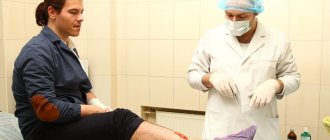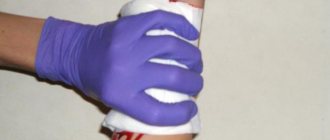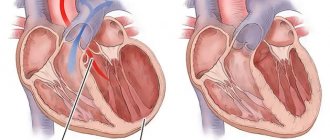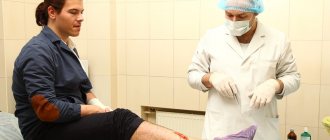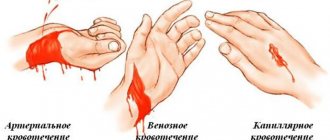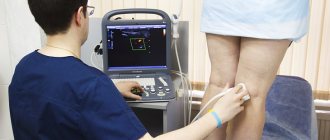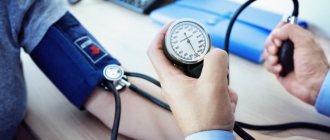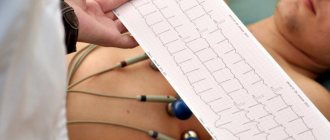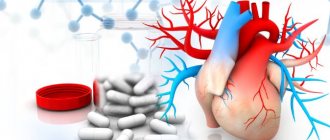Attacks of collapse occur mainly due to a sharp decrease in pressure.
Attacks of collapse occur for several reasons, the most common of which is a sharp decrease in pressure. Over a short period of time, the supply of oxygen to the heart muscle and brain deteriorates, and asphyxia develops. If there is a sharp decrease in vascular tone, it is important to provide timely assistance in case of collapse, otherwise irreversible changes occur, and the victim faces death.
What is collapse?
In a simplified view, collapse is fainting. There is a sharp change in body position, during which the pressure drops to critical levels. This is an acute form of vascular insufficiency. A condition characterized by a decrease in vascular tone and, as a result, a significant deterioration in the functioning of the circulatory system.
If you provide emergency assistance, you can avoid unpleasant complications.
If you provide emergency first aid in case of collapse, you can avoid unpleasant complications or save the life of the victim. With heart failure, blood flow decreases, internal organs do not receive enough nutrition, brain activity deteriorates and asphyxia develops. Prolonged stay in this state in the absence of help threatens the suppression of vital functions.
First aid for emergency conditions of the cardiovascular system
Friday, May 17, 2019
Fainting is a brief loss of consciousness. When wondering how to provide first aid for fainting, you need to understand that such a problem is not independent, but only represents one of the signs of various disorders or malfunctions in the body. In the event that fainting occurs once, it can be attributed to excessive emotional stress or nervous shock. However, if a person loses consciousness quite often, there are definitely reasons for this, among which are the following:
- A decrease in blood pressure, provoked by both external factors and a variety of ailments.
- Violation of the full regulation of the cardiovascular system, accompanied by the outflow of blood from the brain. This manifestation is often associated with too much physical exertion or occurs due to a sudden change in body position.
- As a result of prolonged exposure to the rays of the scorching sun, heat stroke can occur, which can lead to fainting.
- Severe food and alcohol intoxication or pharmaceutical poisoning.
Just before losing consciousness, most people notice previous symptoms. Therefore, if the following phenomena occur, you should immediately help the person take a horizontal position.
· feeling of numbness in the upper and lower extremities;
· pallor of the skin;
· the appearance of ripples or “flies” before the eyes;
· cold sweat accompanied by icy feet and palms;
· nausea, vomiting;
Ringing, noise or feeling of stuffiness in the ears;
· severe weakness, in which the legs may give way.
A distinctive feature of fainting is a rapid heartbeat, accompanied by perspiration and redness of the skin.
Providing first aid for fainting and the above-described signs of an impending fainting condition requires not only a clear algorithm of actions, but also a number of certain things that are strongly not recommended to be done.
In particular, a person who is losing consciousness should not be sharply braked or shaken, which is often attempted by incompetent assistants. It is also prohibited to move the patient and force him into a sitting or upright position.
First aid
- The person needs to be helped to take a lying position and free him from compressive elements (loosen the belt, tie, unfasten the collar).
- If you have ammonia on hand (10% aqueous solution of ammonia), moisten a cotton swab with it and bring it to the victim’s nose, but not closer than 4-5 cm (ammonia vapor has a powerful stimulating effect on the breathing center
- The head moves slightly to the side so that the unconscious person does not choke on vomit.
- You need to open the windows to provide oxygen. If collapse occurs due to overheating in the sun, the patient must be immediately moved to the shade.
- The patient's lower limbs should be kept in an elevated position, which will provide additional oxygen flow to the brain.
Angina pectoris is a clinical syndrome characterized by a sensation or feeling of discomfort behind the sternum, occurs with coronary heart disease as a result of coronary insufficiency due to a decrease in the lumen of the cardiac artery.
During an attack of angina, there is a feeling of tightness or heaviness in the chest, pain radiates to the left side of the arm, shoulder or jaw. The person sweats a lot and has a feeling of fear.
Attacks of angina pectoris occur against the background of physical activity or strong emotional experience, which is relieved at rest. This is where exertional angina occurs. An attack can also occur at rest, that is, after sleep in the morning or at night. This is angina at rest.
First aid for angina pectoris.
- First of all, ease your breathing by unbuttoning the first buttons on your clothes, loosening the waistband of your trousers and skirts.
- If possible, place the patient in a semi-recumbent position. In this position, the heart's need for oxygen decreases and the attack quickly passes.
- Immediately place nitroglycerin under your tongue for immediate relief.
- If there are no medications, to relieve a painful attack, you can put mustard plasters on the area of the heart or chest (where the pain is felt).
- A hot mustard bath for your hands is also suitable. Take one tablespoon of dry mustard and dilute it in one liter of hot water. It will be enough to hold your hands in it for 5-7 minutes. Or immerse your hands in clean hot water for the same amount of time.
- Explain to the patient the correct breathing technique: it is better to breathe through the nose, slowly and deeply, holding at the height of inspiration and at the same time maximally protruding the upper abdomen. With this type of breathing, the air pressure in the chest decreases, which facilitates the flow of venous blood to the heart. Slow breathing allows the body to accumulate carbon dioxide, which leads to dilation of the blood vessels of the heart, which improves the supply of oxygen to the heart muscle.
Myocardial infarction is one of the clinical forms of coronary heart disease (CHD), which occurs with the development of ischemic necrosis (local tissue death) of a section of the myocardium (the muscular middle layer of the heart, constituting the bulk of its mass), due to the absolute or relative insufficiency of its blood supply.
Signs of myocardial infarction are:
- Very strong squeezing pain behind the sternum. It is not relieved by taking nitroglycerin. May radiate (give) to the left half of the chest, left arm or shoulder blade. Duration - from 20-30 minutes to several hours.
- Cold sweat.
- Dyspnea.
- Frequent and irregular pulse.
- The person suddenly turns pale and complains of fear of imminent death and lack of air.
- The patient is excited.
- Nausea, sometimes vomiting.
First aid:
- Provide the patient with complete rest and fresh air.
- Give nitroglycerin, warn that it must be completely absorbed. Give the next tablet after 5 minutes. Repeat no more than 3 times. If nitroglycerin is not available, give validol. It is necessary to measure blood pressure, because... it may drop sharply. If this happens, nitroglycerin and validol should not be given.
- Be sure to call an ambulance.
- To calm the patient, drop 30-40 drops of Valocordin or Corvalol onto a piece of sugar and let it dissolve.
- Give 1 tablet of aspirin (to reduce the process of thrombosis). The tablet must be chewed and washed down with water. You can give 2 tablets of analgin to reduce pain.
- Place mustard plasters on the calf muscles of the limbs as a distraction.
- If clinical death develops, begin chest compressions.
Causes
Collapse can occur due to sudden blood loss during injury. In addition, cardiac dysfunction develops if the body is faced with negative environmental factors (toxic effects, infections, etc.). There are certain risk factors that increase the risk of acute respiratory failure. Reasons contributing to this include:
Various types of intoxication and poisoning.
- bleeding (both internal and external);
- a significant increase in the dose of certain drugs (neuroleptics, adrenergic blockers, etc.);
- entry of toxic substances into the body, severe intoxication;
- infectious collapse develops against the background of previous infections (typhoid, pneumonia, etc.);
- insufficient oxygen content in the room;
- acute pathologies of the pancreas;
- excessive overheating, as well as dehydration;
- electric shock;
- hormonal changes in the body during adolescence (often found in girls);
- pathological heart diseases.
In order to properly provide first aid in case of collapse, you will need to know what risk factor triggered the exacerbation of the condition.
Causes of collapse
The causes of sudden cardiovascular failure may be:
- external or internal bleeding;
- constant exposure to radiation;
- malignant tumor;
- hormonal imbalances;
- acute infections;
- electric shock;
- overheat;
- poisoning;
- dehydration;
- sudden movements;
- medication overdose;
- inflammatory processes in the digestive organs (pancreatitis, peritonitis);
- tachycardia or bradycardia;
- myocardial infarction;
- puberty (applies only to girls).
Manifestation mechanism
Deterioration in health in most cases develops suddenly, so it comes as a surprise to the victim. He may remain conscious, but will not react to what is happening.
In this pathological condition, the pressure is as low as possible, but the manifestations may vary slightly. It depends on what type of collapse it is.
In a pathological condition, the pressure is as low as possible.
It is important to determine the type of lesion as it may affect care and further treatment:
- infectious. Appears against the background of previous severe infections;
- toxic. Associated with exposure to toxins. Often develops in those who work in production;
- burn type of heart failure. Etymology and pathogenesis relate to severe thermal damage to the skin;
- hypoxemic. This variety is associated with changes in pressure outside, to which weather-dependent people react;
- pancreatic. Occurs with pathologies of the pancreas;
- hyperthermic. Formed during heat stroke;
- dehydration Associated with dehydration;
- cordial. The reason for the appearance is the presence of pathologies of the cardiovascular system;
- orthostatic. Appears with a sudden change in body position in patients who cannot walk independently;
- hemorrhagic. Develops against the background of severe blood loss.
Symptoms of collapse
Help with collapse should be provided when the first symptoms appear. Even while conscious, a person is not able to adequately respond to others. Fainting is accompanied by the following symptoms:
Decreased body temperature, chills.
- extremely pale skin tone, tinged blue in places;
- deterioration of health, tinnitus, darkness in the eyes;
- dry mucous membranes;
- decreased body temperature, chills;
- breathing is rapid or, on the contrary, slow, shortness of breath appears;
- the pulse is difficult to detect, it is slow, and may be completely absent;
- a sharp decrease in blood pressure to minimum values;
- discomfort in the heart area, headache;
- nausea and vomiting.
With collapse, facial features become sharper, tremors in the limbs and loss of consciousness may occur. In case of fainting, emergency assistance should be provided immediately.
Giant urticaria, Quincke's edema
Giant urticaria and Quincke's edema are immediate allergic reactions . With urticaria, blisters suddenly appear on the skin, surrounded by a zone of hyperemia, rising above the skin level, sometimes with swelling and itching, with a tendency to merge. There may be general symptoms: fever, agitation, arthralgia, collapse. With Quincke's edema, limited swelling of the skin, subcutaneous tissue or mucous membranes appears acutely with a feeling of fullness, but painless; when pressed, a hole does not form at the site of the edema; with swelling of the vocal cords, symptoms of allergic laryngeal edema occur.
First aid for collapse
Before providing emergency assistance in case of collapse, you need to call a team of doctors, and only then begin rehabilitation measures. Assess the condition of the victim, try to find out what could have caused the deterioration in health, whether he suffers from heart disease.
It is extremely important not to delay if collapse occurs in children, as there is a risk of accelerated development of complications.
The collapse assistance algorithm includes the following actions:
- help the person find a comfortable position, placing him face up;
- Raise your legs, put something under them to give the position above the level of your heart. Use a pillow or rolled up clothing;
The victim must be laid down and his legs raised using available means. - help the person come to his senses. Use a cotton swab soaked in ammonia. Then, when the victim returns to consciousness, turn his head to the side;
- if clothing presses and interferes with breathing, it must be removed or loosened. Provide fresh air by opening a window. If people are gathered nearby, tell them to move away so as not to interfere with circulation;
- for extremities, use warm heating pads or blankets, as they can become cold;
If necessary, help the patient warm up. - if the cause of collapse is excessive blood loss, it is necessary to provide assistance to stop it. Proceed depending on the type of bleeding. For venous, apply a tight bandage; for arterial, clamp the vessel or use a tourniquet.
Do not disturb the victim and ensure complete rest until the ambulance arrives. If a person is unconscious, do not give him water, shake him or try to give him any drugs.
Treatment
When you have urgently used the algorithm of actions and assistance, entrust the rest to the doctors. The ambulance team must restore normal activity of the circulatory system with the help of medications. Before using the drugs, measure blood pressure, look at the color of the skin, and count the number of heart beats per minute.
In some cases, hospitalization of the victim is necessary.
To stabilize the condition, sodium chloride solution is administered intravenously, glucocorticosteroids, anti-spasm agents, etc. are used. If hospitalization of the victim is necessary (it is impossible to find out the cause of the deterioration on the spot), an algorithm for providing assistance is determined in the conditions of a medical institution.
When bleeding occurs, it is stopped. If there are other reasons for the development of the condition, help consists in eliminating them and restoring all functions of the body.
Collapse requires a quick response from those who were near the person at the time the condition worsened. At home, help will consist of giving a comfortable position and bringing him to consciousness. You should not use medications if the exact cause of your deterioration is unknown. Only doctors can decide on the intravenous use of certain drugs. In some situations, hospitalization of the victim will be required.
